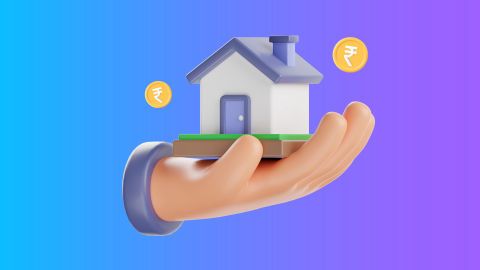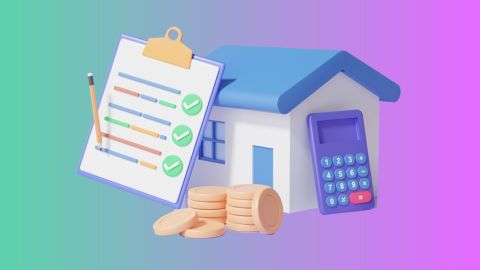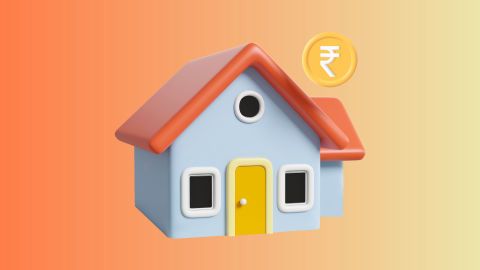Property tax is the amount that property owners pay to their local government or municipal authority. This tax applies to assets like land, buildings, and homes and serves as a vital source of revenue for urban and rural development projects. All property owners are required to pay this tax, though the amount can vary based on factors such as location, property value, intended use of the property, and other local considerations. Understanding property tax can empower property owners to plan their finances better, secure mortgage loan with ease, and stay away from unnecessary penalties or fines.
What is a property tax slab?
A property tax slab refers to the range of property value categories or groups that determine the rate of tax a property owner will pay. Essentially, the government divides properties into specific slabs or categories based on their value, location, or other criteria. Each slab has its own fixed tax rate. The higher the value of your property, the higher the slab you fall into, and the higher the tax rate you will pay. These slabs ensure a systematic and fair way of charging property tax across different areas and income groups.
How is property tax calculated?
The calculation of property tax depends on several factors, including the annual value of the property, the applicable tax rate, and local municipal rules. Each of these factors determines the amount a property owner will pay in taxes annually. Local governments may have their own rules and criteria that affect property tax rates, so it's important to check the specific formula in your area.
The general formula used to calculate property tax is as follows:
Property Tax= Base value x Type of building x Age factor x Floor factor x Category of use x Built-up area
Explanation of the terms:
Base value: The initial market value assigned to the property.
Type of building: Whether the property is residential, commercial, or mixed-use determines its tax rate.
Age factor: Older properties may have different rates based on depreciation.
Floor factor: This accounts for the number of floors in a building, as properties with additional floors may have a higher taxable value.
Category of use: Properties are categorized by their use—residential, commercial, or agricultural—and different tax rates apply.
Built-up area: The total constructed area of a property is factored into the tax calculation.
Local property authorities review these factors to determine the total tax amount due. Understanding these components will help property owners estimate their tax obligations more accurately.
Paying your property tax on time is crucial for maintaining compliance, but why stop there? Unlock the financial value of your property with a loan against property. Whether for business expansion, education, or other goals, this secured loan offers funds without sacrificing ownership. By pledging the value of your own property, you can access large funds —all with flexible repayment options and competitive interest rates. Get loan of up to Rs. 10.50 crore against your property within 72 hours* of the approval.
Property tax slabs in India: State-wise overview
Different states and cities in India have their own tax rates and slabs. The rates depend on location and specific local government policies. Here's a quick state-wise overview:
| State/ Union Territory | Residential property tax slab (%) | Commercial property tax slab (%) |
| Delhi | 7.5% - 20% | 10% - 30% |
| Maharashtra | 8% - 15% | 12% - 25% |
| Karnataka | 10% - 20% | 15% - 30% |
| Tamil Nadu | 5% - 20% | 10% - 28% |
| Uttar Pradesh | 10% - 15% | 12% - 20% |
| West Bengal | 7% - 18% | 8% - 25% |
Factors affecting property tax rates
The rates of property tax are influenced by several factors. Some key ones include:
Property location: Urban areas typically have higher property tax rates than rural areas.
Property value: The higher the value of your property, the higher the tax rate.
Property usage: Residential properties and commercial properties have different tax rates.
Size and type of property: Larger properties or luxury properties attract higher rates.
Local government policies: State or local tax rules can alter rates.
Amenities and infrastructure: Proximity to essential amenities like schools, hospitals, and markets can also impact the rate.
Benefits of understanding property tax slabs
Understanding property tax slabs can save you money and time. Here’s how:
Financial planning: Knowing the slab you fall into allows you to budget effectively for annual payments.
Avoid penalties: Timely tax payment avoids fines and penalties.
Comparison opportunities: You can analyse if relocating to a different area could lower tax burdens.
Property investment decisions: Understanding tax slabs can influence decisions about property purchases and real estate investments.
Documents required to pay property tax
Paying property tax is a mandatory responsibility for property owners. To ensure a smooth process, you need to have the following documents ready:
Property ownership proof: Sale deed or title deed to confirm ownership of the property.
Previous tax receipts: Past property tax payment receipts for reference.
Identity proof: Aadhar card, PAN card, or passport to verify your identity.
Property details: Documents with property dimensions, type (residential/commercial), and location.
Tax assessment notice: If applicable, a copy of the property tax assessment notice issued by the municipal authority.
NOC from society: For apartments, a No Objection Certificate from the housing society may be required.
Organising these documents not only simplifies tax payments but also proves beneficial when exploring financial opportunities with your property. For example, Bajaj Finance offers a loan against property—a convenient way to access funds for business expansion, education, medical expenses, or debt consolidation. With competitive interest rates, flexible repayment options, and EMIs starting at just Rs. 750 per lakh*, this loan lets you unlock your property's value without losing ownership.
Comparative analysis of property tax rates in urban vs rural areas
Urban and rural property tax rates vary due to differences in infrastructure and demand.
| Aspect | Urban areas | Rural areas |
| Tax rate (%) | 10% - 25% | 5% - 15% |
| Infrastructure costs | Higher infrastructure costs lead to higher taxes | Fewer infrastructure costs lead to lower taxes |
| Property value | Higher value due to demand | Lower property value due to lower demand |
How to check your property tax slab online?
Checking your property tax slab online is simple and saves time. Here’s how:
Visit your local municipality's website: Go to the official website of your local municipal authority.
Enter your property details: You’ll likely need property number or owner identification information.
Access the property tax section: Look for an option like "Check Property Tax" or “View Tax Slab.”
Submit the required information: Input the required details and verify your slab.
Review the tax slab and rate: The system will display your tax rate and slab.
While the payment process may take more time, it is always good to maintain a record of your payments. These records can be vital if you choose to monetise your property through a loan against property in the future. By pledging the value of your own property, you can access large funds—all with flexible repayment options and competitive interest rates. Get a loan of up to Rs. 10.50 crore with the option of interest-only EMIs during the initial tenure.
Property tax for Residential vs Commercial properties
Residential properties:
These properties usually have lower tax rates compared to commercial ones. They are used for living purposes and tend to have fewer tax implications unless they are luxury properties.
Commercial properties:
These have higher tax rates because they are used for business and generate income. The tax also accounts for higher wear and tear.
Impact of property tax on homeowners' finances
Property tax directly affects a homeowner's finances by adding a recurring annual expense. Failure to pay these taxes on time can result in fines or even legal consequences. Moreover, high property tax rates can impact long-term financial goals, such as saving for a house renovation or paying off a home loan.
Pro tip: Why just manage your property when you can make it work for you? If you are looking to meet long-term financial goals or need funds for an emergency, why not consider a loan against property? By using the value of your property, you can get access to a large amount of money with easy repayment options and competitive interest rates. It is a simple way to unlock your property’s potential. Get access to large funds with the flexibility to part-prepay your Flexi Loan at no extra cost.
Conclusion
Understanding property tax slabs, how they’re calculated, and how rates affect homeowners can make property ownership and financial planning much smoother. Whether you are a homeowner or considering loans like loan against property, being aware of your tax slab and related rates can lead to better financial decisions. Stay informed, pay taxes on time, and plan your finances wisely.
*Terms and conditions apply.




